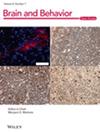Rare Variants Cause Charcot-Marie-Tooth Disease in Malian Families
Abstract
Introduction/Aims
Charcot-Marie-Tooth disease (CMT), the most common inherited peripheral neuropathy, is clinically and genetically heterogeneous with over 100 genes identified to date. Recently, next-generation sequencing (NGS) has enabled molecular diagnosis in previously unidentified CMT cases. However, less progress has been achieved in sub-Saharan African (SSA) populations. We report rare CMT variants found in four unrelated Malian families.
Methods
Patients went through a thorough neurological examination and Nerve Conduction Studies (NCS) were performed. DNA was extracted for genetic analysis (CMT gene panel testing and whole-exome/genome sequencing). Putative variants were confirmed with Sanger sequencing and segregation was checked in all available family members. Deleteriousness was checked using several in silico prediction tools and protein modeling.
Results
Nine patients (three males and six females) from four families were enrolled. The mean age at onset and diagnosis were 15 and 22.7 years, respectively (ranges: 3 to 55 years, and 12 to 58 years). Walking difficulty was the first symptom commonly reported. Neurological examination found distal muscle weakness and wasting with sensory loss, reduced tendon reflexes, and skeletal deformities. In addition, some patients presented with ataxic gait associated with incoordination that are not in the forefront of CMT features. NCS was consistent with the axonal pattern in three families. Genetic analysis revealed rare pathogenic variants in BSCL2, SH3TC2, and PEX10, and of unknown significance in BAG3.
Discussion
This study reports rare variants in these CMT genes for the first time in SSA populations, expanding the global epidemiological, clinical, and genetic spectrum of these diseases.


 求助内容:
求助内容: 应助结果提醒方式:
应助结果提醒方式:


